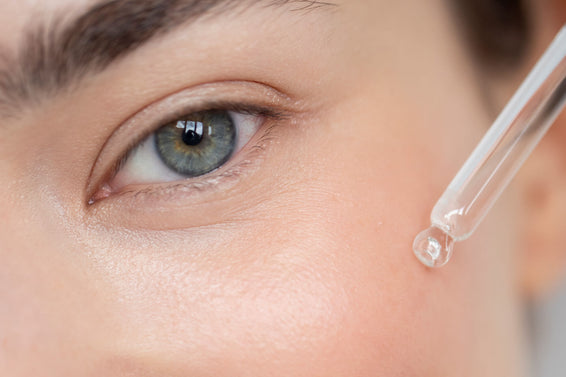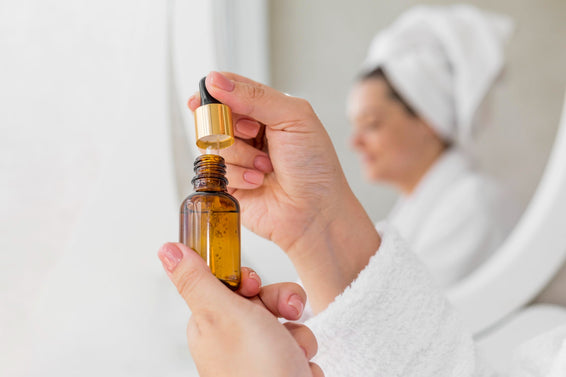Castor Oil Guide
What makes life so exciting is that every day is different. A day could be an adventure, a beginning, or a pleasant surprise! Life is so unpredictable, but beauty and personal care does not have to be.
Castor oil is an incredible product for that. It has unique properties to help keep us looking vibrant and healthy – day after day.
The purpose of this guide is to deliver you major insights on its uses, specifically for beauty and personal care. You will discover the different benefits of this essential oil for skin, hair and body. Each benefit comes with easy steps on “How to Use It”. It is a compilation of common methods, which most users do. Have fun trying them to experience the difference yourself.
This guide will also help give you a better understanding of castor oil itself – where it comes from, what it looks like, and how it is made. You will learn about castor oil precautions and side effects to guide you for a safer, more efficient use of the oil. Be sure to read the practical tips that might come in handy when choosing and buying the best castor oil products for you.

While the information published on this Shiny Leaf castor oil guide is believed to be accurate, it is solely for providing general information on castor oil. No one should rely on this information as an alternative to medical advice from your doctor or healthcare provider. Nothing contained herein should be interpreted nor intended to be used for medical diagnosis or treatment. Should you have any medical related questions, contact your physician or other healthcare provider promptly.
Taking each day as a fun ride keeps the mind, body, and spirit alive. We explore, strive and succeed as we nurture ourselves as a person. Treat yourself right and take care of yourself because you deserve to.
Remember, loving yourself is key to a happy existence!
What is Castor Oil?
Whether you are a regular fan of using castor oil or a new potential user with a growing curiosity about it, this is the way to begin.
Learning the story behind something could be a useful tool, especially with using certain products. It is always good to know its background such as origin or composition. A product user that opens his or her mind to information is a sign of a smart consumer.
In this part, you will learn everything about castor oil: where it comes from, what it looks like, what it is made of and how it is produced.
Origin
Castor oil is an extract that comes from the seeds of the castor oil plant. Others simply call it castor bean or ricin. In the world of science, this plant is known as Ricinus communis. It is a member of the Spurge family (Euphorbiaceae) where similar plants like poinsettia also belong.
This flowering plant is classified as a shrub, but it can develop fully into the size of a small tree. It can reach up to 12 meters tall when in open spaces and warm climates. The plant grows at an amazing rate. In a year, a castor oil plant can expand more than three meters in height with each leaf being one meter long.
The plant is common in places with a tropical or subtropical climate. It thrives in the Southeastern Mediterranean Basin, Eastern Africa, and India. It can be found almost anywhere in the world, as long as climatic conditions fit. Castor oil plant grows wild on rocky hillsides, unplanted farmlands, along road shoulders, and at the edges of cultivated lands.
Upon maturity, the plant produces castor seeds from where the oil is taken from. A single castor seed is 40% to 60% castor oil.
Castor oil plants are grown commercially on plantations for castor oil production. It is resistant to drought and is easy to grow. Let’s take a closer look at the castor plant to learn more about the origin of castor oil.

Leaves
The leaves of a castor oil plant are large, and can grow up to 15 to 45 centimeters long. It has a palmate shape similar to a human palm with the fingers spread open. In leaf anatomy, the “fingers” are often referred to as lobes. Each castor oil leaf may contain 5 to 12 pointed lobes.
Young leaves may appear glossy, with red or bronze color. This gradually changes to dark green, as the plant grows older. They may assume a reddish tint when fully mature.
Flowers
Castor oil flowers have separate male and female flowers. In botany, this is termed as monoecious. This is a trait of having both the male and female reproductive organs in separate flowers on the same plant. Some examples are pines and corn.
In the case of castor oil plant, the female flowers are always located above their male counterparts. Their colors help to identify them easily. Female flowers are reddish while male flowers are beige and clustered.
Fruits
Matured castor oil flowers may form fruits. These fruits are oblong pods with spines similar to a cactus. Each fruit may contain an average of three seeds. The color ranges from green to reddish purple, depending on the variety and maturity of the plant.
Seeds
The seeds of a castor oil plant are the primary source of castor oil. These are oval and light brown in color, with streaks of dark brown shades.
Planting the seeds is one of the ways to germinate the castor oil plant. However, these seeds contain a toxin called ricin. Commercially available castor oils are safe. They have undergone heating during extraction and refining processes to inactivate the ricin. This is to ensure that they are good for human use, both in internal and external applications.

Properties
Castor oil may be colorless to pale yellow liquid. It has a very thick and sticky consistency with mild odor or taste. Crude or unrefined castor oils have yellowish color and distinct odor. They turn colorless and odorless when sent to refinery for bleaching and deodorizing.
This oil has a boiling point of 595.4 degrees Fahrenheit and a density of 8 lbs/gal. It is non-drying and it does not evaporate easily.
Composition
Castor oil is rich in ricinoleic acid, which is around 95% of its composition. This type of fatty acid has properties that can relieve pain and reduce swelling. Using it on your skin may help protect the skin against bacteria that causes acne.
![]() Read More: Essential Oil Products
Read More: Essential Oil Products
How is Castor Oil Produced?
Half of a castor seed is pure castor oil. Various methods of extracting this oil from the seeds include mechanical pressing, solvent extraction or combination of both. To ensure safety and high quality, castor oil production may involve some of these stages discussed briefly in this section.

Preparation
Castor oil production begins by harvesting the beans from the plants. Harvesting requires proper timing. Otherwise, the pods may burst and randomly shoot the seeds around the plant. When the fruits begin to turn brown and dry, it is an indication that they are ready. The entire spikes are cut and the fruits are gathered. They are dried further until the pods open and the seeds come out by themselves.
Harvesters collect the seeds and remove foreign materials such as leaves, sticks, sand or dirt. Taking out the hulls to clear the seeds is also necessary. A small-scale production uses hands to do it, but a mass production would benefit for using a machine. The seeds should then be cleaned, and dried. Dried seeds undergo prepressing or crushing to have them ready for extraction.
Extraction
Mechanical pressing, solvent extraction or combination of both methods extract the oil from castor seeds. Most production facilities use the combination method because it most likely extracts oils efficiently.
Castor seeds contain ricin, which is a toxic protein. It is found in the meal or cake after the oil has been extracted. Applying low heat during the oil extraction destroys this unhealthy property so it becomes safe to use. Heating also aids extraction by up to 80% of the available oil. This is a significant difference compared to 45% yield when done in lower temperatures.
Filtration and Purification
Production systems employ a filtration and purification process to obtain pure castor oil. This stage uses a filter press to eliminate tiny pollutants, water, dissolved gasses and acids.
The procedure then continues by feeding the remaining material back to the extraction cycle along with new seeds. Doing this helps to obtain the seed’s oil content thoroughly.
A castor cake is the waste material discharged from the filter press. It usually contains about 8 to10 percent more oil obtained by solvent extraction.
Refining
The filtered oil is called crude or unrefined oil. This particular process involves sub-processes including degumming, neutralization, bleaching and deodorization to improve oil quality.
- Degumming – removes water and other compounds from the oil.
- Neutralization – removes excess fatty acids from the oil. Excess fatty acids in castor oil have the ability to alter its way of reacting with other substances. For instance, when mixed with a carrier oil for massage.
- Bleaching – removes coloring and products of oxidation. Oxidation in oil is a bad reaction that weakens its quality and causes bad taste or smell. Bleaching also brightens the color of the oil.
- Deodorization – removes odor from the oil. Unlike other vegetable oils, castor oil requires minimal or no deodorization. Castor oil deodorization is more common in the pharmaceutical industry.
TIP: Premium Shiny Leaf Castor Oil is cold-pressed and unrefined. Therefore, it contains the greatest concentration of nutrients essential for keeping your skin and hair healthy. It is made from natural ingredients and is free from harmful chemical and solvents. Cold-pressed castor oil from Shiny Leaf is USDA Certified, so it's guaranteed 100% pure, natural and safe!
![]() Read More: Pure Essential Oils
Read More: Pure Essential Oils










